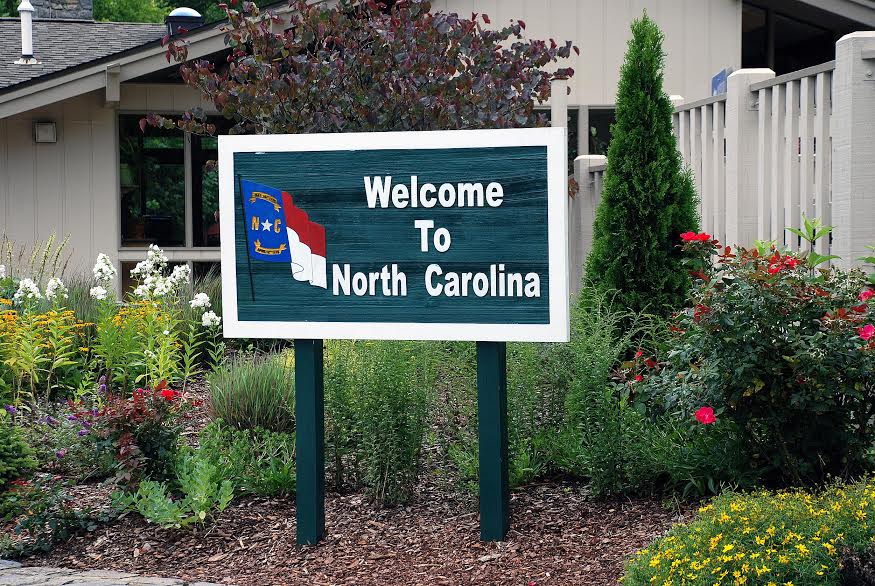The Republicans who control North Carolina’s General Assembly are determined to draw election-district boundaries favoring their party’s candidates and promoting their conservative agenda. But when Republican voters are outnumbered by Democrats, crafting favorable districts while also complying with voter protections embedded in the Constitution becomes tricky.
Now we can expect to see whether the legislature’s latest redistricting effort passes inspection in federal court – or, like the one it’s meant to replace, gets shot down in flames.
At stake are the state’s 13 seats in the U.S. House of Representatives. A panel of three federal judges on Feb. 5 ruled that two congressional districts, as drawn following the 2010 census, amounted to illegal racial gerrymanders because they include outsized percentages of black voters – voters who also tend to lean Democratic.
Mindful that the state’s primary elections are set for March 15, the judges set a deadline of Feb. 19 to redraw district lines. Legislators asked the U.S. Supreme Court to stay that ruling and let the congressional contests proceed as scheduled, but the request was denied. So a fallback date for the congressional primaries, June 7, is now in effect.
Meanwhile, to comply with the lower court’s deadline, legislators approved a new district map that’s dramatically different from the old one. Notably, it looks less like a collection of ink blots or bug splatters set against a Tar Heel State outline.
Yet in one key aspect, the map hasn’t changed a bit. The current one – used in the 2012 and 2014 elections – tilts so far toward a Republican advantage that Republicans now hold 10 of the 13 seats. The new map’s sponsors say it’s designed to achieve the same outcome.
That’s in a state where, according to current State Board of Elections figures, 2,633,871 voters are registered as Democrats and 1,971,440 as Republicans.
Partisan prescription
The preferences of unaffiliated voters and Libertarians – now totaling 1,835,981 and 27,984, respectively – of course have to be taken into account in assessing election results. So do the merits of individual candidates. But to accomplish what’s likely to be an ongoing 10-3 Republican vs. Democratic split, in the face of the Democrats’ advantage in voter registration, suggests that the map-drawers are still using some mighty strong medicine.
Previously, when GOP legislators crammed African-American voters into the contested 1st and 12th Districts, one in the northeast and the other between Greensboro and Charlotte, they sacrificed those districts to the Democrats. At the same time, they drained Democratic votes from the surrounding districts, which are supposed to be more or less equal in population. That has made them more hospitable for Republican office-seekers.
The upshot is that not only have Democrats been put at a disadvantage generally, but also that the issues and concerns of many African-Americans could be swept aside by candidates who owed their election to others. As the three judges affirmed, the Equal Protection Clause of the 14th Amendment stands guard when voters are mistreated in that fashion.
Race off the radar?
Republican leaders perhaps said among themselves, “OK, if they don’t want us to pay attention to race, well then, we won’t!” They claim to have drawn the new districts with no regard to racial distributions. They must have taken a certain pleasure in hearing African-American Democrats complain, apparently trying to have it both ways.
Yet to a degree, black voters are entitled to have it both ways. The federal Voting Rights Act is supposed to give minority voters a fair chance to elect their preferred candidates, in some cases by grouping those voters together. When racial gerrymandering occurs, that principle is followed out the window. So a question now to be settled is whether the new map amounts to racial gerrymandering even if black voters aren’t specifically targeted.
It didn’t take long for Senate Minority Leader Dan Blue, a Raleigh Democrat and African-American, to offer a blistering critique.
“You’ve stuffed half the black voters of this state” into the reconfigured 1st, 4th and 12th districts, Blue told Republicans at a committee meeting where the plan was unveiled. He called the new plan “an abomination” and “an assault on democracy.”
The districts Blue mentioned would indeed have the largest shares of black voters, although the 4th – all of Orange County, the southern tier of Durham County and an adjoining portion of central Wake, including predominantly black neighborhoods in Raleigh – would fit in the top three by only a slim margin.
The 1st District, encompassing several northeastern counties and most of Durham, would have a black voting age population amounting to 43.8 percent of the total. The comparable figure in the 12th District, covering most of Charlotte and Mecklenburg County, would be 35.3 percent. And in the 4th, it would be 21.7 percent.
Under the plan invalidated by the federal court, black voters were a majority in both the 1st and 12th Districts (the latter in its much-maligned snake configuration along the I-85 corridor). Further, the judges found that the districts had been fashioned with their racial composition foremost in mind – in the court’s view, a show-stopping no-no. So the new plan’s sponsors can point to a reduction in the districts’ black make-up and call it progress.
But what if the new map undercuts black voters’ ability to elect their preferred candidates – who, in the 1st and 12th Districts as currently drawn, have been African-American? That could run afoul of the Voting Rights Act.
Republicans assert, with some plausibility, that voting patterns in those districts are not so racially polarized that a black candidate wouldn’t have a chance. Democrats – who see discrimination against a legally protected minority and disenfranchisement of voters submerged in districts where their voices are drowned out — may end up asking the courts to gauge whether that assertion stands up.
Three out of 10
Another measure, culled from statistics accompanying the new map, illustrates how the districts are skewed from a partisan standpoint.
Map-drawers analyzed each district to see how various election contests over the past several years would have played out there, based on votes actually cast. Consider, for example, the 2014 race between incumbent Democratic U.S. Sen. Kay Hagan and Republican challenger Thom Tillis (then speaker of the state House).
Hagan would have carried the 1st District with 66.9 percent of the vote, the 4th District with 65.5 percent and the 12th District with 66.7 percent. Tillis, who won the election by an overall margin of 1.7 percent points, would have carried the other 10 districts. It couldn’t be plainer that the 1st, 4th and 12th Districts lean strongly Democratic, while Republicans are well positioned to ride tall everywhere else.
The new map cleared the state Senate and House on Feb. 18 and 19, in votes that fell along party lines. Democrats objected strenuously, with House Minority Leader Larry Hall of Durham saying the new plan amounted to a distinction without a difference from the old one.
It’s true that the new scheme divides fewer counties and relies on districts that are more compact. In terms of the logistics of democracy, that’s an upgrade, helpful both to candidates and constituents.
But the legislature’s Republican chiefs really have no good answer as to why, in a state where Democrats make up 41 percent of the electorate, districts should be drawn so that 77 percent of North Carolina’s seats in Congress are expected to be won by Republican candidates. No good answer, that is, except that they have the power to make it so.
As the legislative debates made clear, they fully understand the implications for policy-setting when GOP candidates are given an edge. Democrats could say the same in pressing for a bigger slice of the electoral pie. But the redistricting controversy also bears on whether a principle central to our system of government will be upheld.
That principle is supposed to grant each voter an equal say at the polls. It’s undermined when voters are gerrymandered into districts where their views carry little weight. And it collapses when minority voters are lumped into districts in such a way that their overall influence is marginalized.
The sad truth of the matter is that North Carolina’s African-Americans have had to deal with a long history of marginalization – a history that they’ve gone far toward overcoming but that continues to weigh heavily on chances that many of our black neighbors will achieve their hopes and dreams.
In advocating for fairness at the polls, the Council of Churches and its allies recognize that the ability to cast a meaningful vote is crucial to further advancement for people of color. If it takes the courts to root out gerrymandering that works against the interests of those who have faced so many challenges, then the courts will have done a good day’s work.


